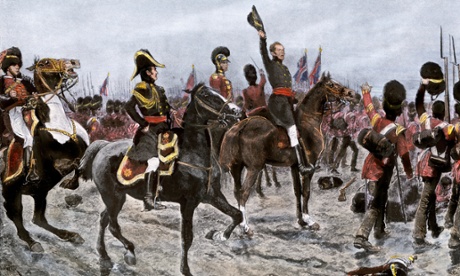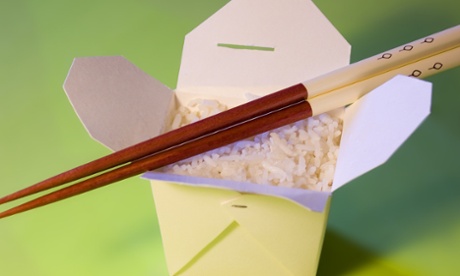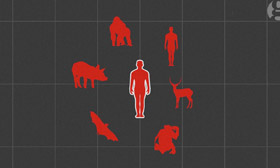
There’s a paradox at the heart of consumer culture: the new is popular, but the old never really changes. As Apple introduces its new iPads, it’s hard to ignore the fact that they look like the new iPhone 6 – which, in turn, looks like the original iPhone.
It turns out that makeovers are often for the weak, as far as consumer products go. From sneakers to takeout, the things that last are a special kind of time traveller, always appropriately dressed for the future. Here’s a brief tour of the 10 most unchanging icons in your home.
iPhone
First introduced: 2007
Unveiled at a Macworld convention in 2007, Apple’s Jony Ive-designed iPhone has barely changed in looks since then, keeping its single centrallyplaced button and large screen. This doesn’t prevent people queueing round the block each time a new model is released, which has happened, like clockwork, once a year since it was launched.


Coke bottle
First introduced: 1916
The contoured bottle of Coca-Cola was first introduced in 1916 in response to worries in the company about copycat brands. It was designed by the Root Glass Company of Terre Haute, Indiana, who took inspiration from a cocoa bean to find the shape, and was the first commercial product to appear on the cover of Time magazine. According to the Coca-Cola Company, if all the Coke bottles in the world were laid endtoend, they would reach to the moon and back more than 1,677 times. Which is horrifying, when you think about it.


Porsche 911
First introduced: 1963
The basic design of the 911, with its engine slung out over the back wheels, has hardly changed since the car was first introduced in 1963, though the modern iteration is vastly more evolved than its ancestor. It is one of the most successful racing road cars ever designed, winning races as disparate as the World Rally Championship and the Le Mans 24-hour.


Heinz baked beans
First introduced: 1895
Classified as an “essential food” by the rationing authorities in Britain during the second world war, Heinz baked beans are sealed into the cans raw and then cooked in a pressure oven. Some 1.5m cans of Heinz baked beans are sold every day in the UK alone.


Chanel No 5
First introduced: 1921
Produced to a formula by Ernest Beaux, Chanel’s No 5 was actually the first perfume launched by Coco Chanel, rather than the fifth. For Chanel, who was raised by nuns in an orphanage from the age of 12, the number five was a signifier of the purest embodiment of a thing. It was first released to a few select, favoured clients at her Paris boutique, and its bottle is said to be based on a whisky decanter used by her lover, Arthur Capel.


Kit Kat
First introduced: 1935
The only major variation in the basic recipe of the four-finger Kit Kat bar was during the second world war, when shortage of ingredients forced a temporary change from milk to dark chocolate. After the war, the recipe was resumed.


Converse All Star
First introduced: 1917
Marquis Mills Converse opened the Converse Rubber Shoe Company in 1908 and first made the Converse All Star basketball shoe in 1917. It wasn’t until 1921, however, that basketball player Chuck Taylor became the brand’s ambassador, and in 1932 his signature was added to the patch on the ankle. The basic high-topped sneaker design has changed little since.


Bic Crystal ballpoint pen
First introduced: 1950
It was advances in Swiss cutting technology which allowed for the manufacture of the millimetre-diameter metal ball that forms the nib of the ballpoint pen, which allows a consistent flow of ink from the barrel to the paper. It was designed by a team at Société PPA, a company owned by Marcel Bich, who had seen a ballpoint pen made by Lázló Biró during the war. The 100,000,000,000th – that’s one hundred billionth – Bic Cristal pen was sold in 2006.


Wellington boot
First introduced: 18th Century
Commissioned as cavalry boots by Arthur Wellesley, the Duke of Wellington, the Wellington boot – at first made of leather – was one of the first rubber boots ever made in 1856 when Charles Goodyear’s process for vulcanising rubber was perfected. They were designed by Wellesley’s shoemaker, Hoby of St James, to specifications of the Duke’s own, and first became popular among patriotic Britons after his victory at Waterloo.


Fender Stratocaster
First introduced: 1954
Perhaps the Platonic form of the guitar, the Fender Stratocaster was first popularised by Buddy Holly, and later Eric Clapton – who had one covered in gold leaf – and Pink Floyd’s David Gilmour. A Stratocaster signed by Jimmy Page, Eric Clapton, Mick Jagger, Pete Townsend, Ray Davies and others was sold at auction to raise funds for victims of the 2005 Indian Ocean tsunami for $2.7m, the most expensive guitar ever sold.


Oyster pail takeout container
First introduced: 1894
First patented as a container for oysters by a Chicago inventer called Frederick Weeks Wilcox, the design hasn’t changed since. The now-ubiquitous pagoda picture on the side of the box, according to a history of the oyster pail in the New York Times, was added by a graphic designer at a company called Fold-Pak – now the major manufacturer of oyster pail containers – in the 1970s.















